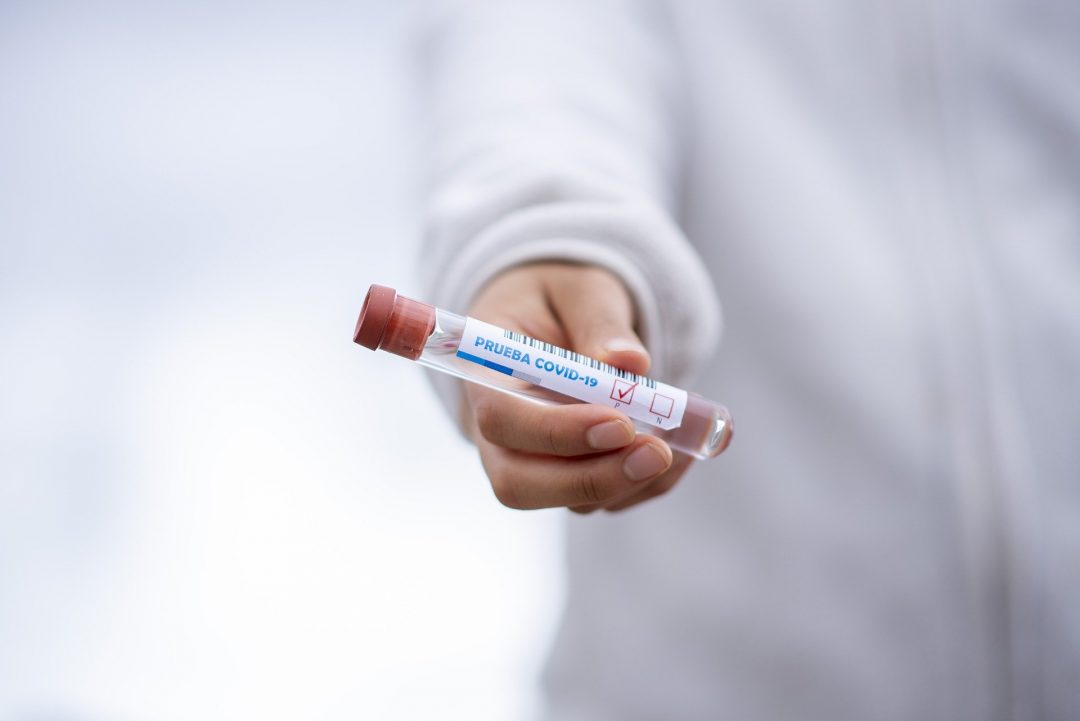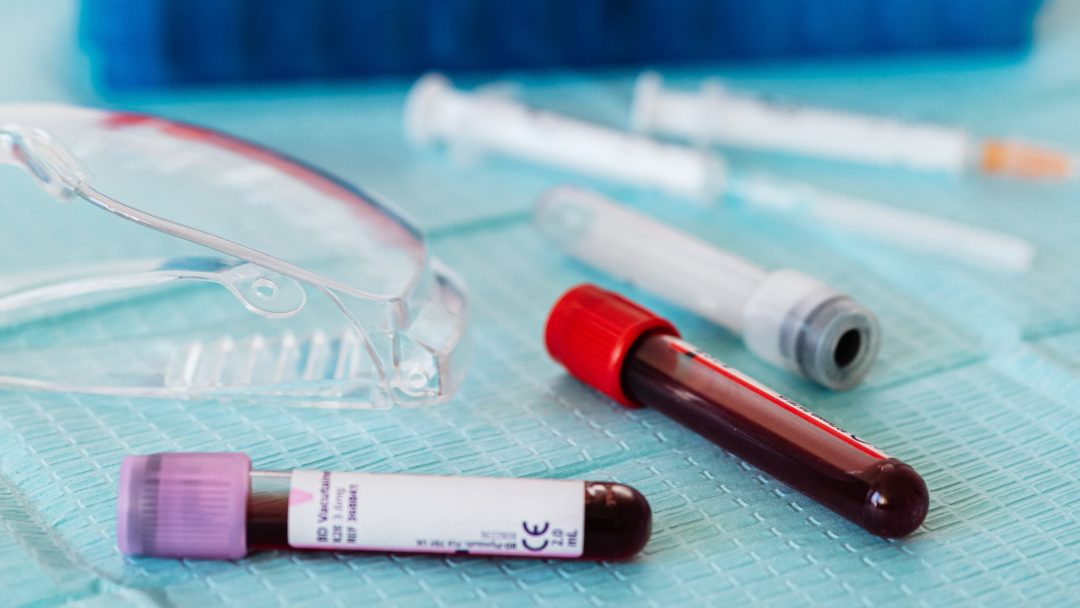Randomized Trial of Three Anticonvulsant Medications for Status Epilepticus
N Engl J Med; 381(22):2103-2113
28 November 2019
Kapur J, Elm J, Chamberlain JM, Barsan W, Cloyd J, Lowenstein D, Shinnar S, Conwit R, Meinzer C, Cock H, Fountain N, Connor JT, Silbergleit R; NETT and PECARN Investigators.
PMID: 31774955
DOI: 10.1056/NEJMoa1905795
ClinicalTrials.gov: NCT01960075
Introduction
Status Epilepticus is severe neurological emergency condition, which usually require senior consultation and immediate intensive care from the very beginning. Status epilepticus can present as an exacerbation of a pre-existing seizure disorder or the initial manifestation of a new undiagnosed seizure disorder, or it can represent an insult other than a seizure disorder.
Convulsive type of status epilepticus is defined as a continuous convulsion for longer than 5 minutes or 2 subsequent seizures without recovery of baseline consciousness. Exact time necessary for diagnosis of status epilepticus has been changed several times. The previous time requested to diagnose status epilepticus for more than 30minutes has been superseded with the aim of limiting the irreversible neurologic damage that has been proved in animal models. Early treatment and management of seizure lasting over 5 minutes showed improved outcomes of status epilepticus in adults and children, whereas delaying such intervention carry increased risk of neurologic harm and death, particularly in tonic-clonic status epilepticus.
On the other hand, non-convulsive status epilepticus carries relatively fewer risk and is defined as a non-convulsive seizure associated with changes in mental status lasting at least 30 minutes.
In the setting of the status epilepticus there are three main stages in management protocols set and overall accepted in UK and US. First stage consists of benzodiazepine treatment (Diazepam, Lorazepam or Midazolam). Usually up to third of cases are resistant to therapy of first-line agents and need further management. Second stage consist of anticonvulsive medication (Fosphenytoin, Levetiracetam, Valproate) and these drugs efficacies and safe profiles are the main subjects of current research and topic of this particular article. In NICE guidelines stands recommendation for using Fosphenytoin or Phenobarbital as a possible options. Third stage consist of general anaesthesia approach and this stage is not supported by high-quality evidence to guide of one of three anaesthetic agents (Midazolam, Propofol and Thiopental).
,,Despite all this information, there are still many things modern medicine don´t have prove for. This article is giving review for three most common antiepileptic drugs that are standardly used in management of status epilepticus.”
Methods
Study design
Funded by the National Institute of Neurological Disorders and Stroke. The Established Status Epilepticus Treatment Trial (ESETT) is an investigator-initiated, multicentre, randomized, blinded, adaptive trial.
With the main objective of comparation of effectiveness in three antiepileptic drugs (Levetiracetam, Phosphenytoin and Valproate) in Benzodiazepine refractory status epilepticus in Children and Adults.
Did the trial address a clearly focused issue?
Yes. The primary outcome was absence of clinically evident seizures and improvement in the level of consciousness by 60 minutes after the start of drug infusion, without additional anticonvulsant medication.
Was the assignment of patients to treatments randomised?
Yes. A total of 384 patients were enrolled at 57 hospital emergency departments across the USA and randomly assigned to receive levetiracetam (145 patients), fosphenytoin (118), or valproate (121). Reenrolment of patients with a second episode of status epilepticus accounted for 16 additional instances of randomization.
Double-blind protocols were used. Unblinding of the trial drug for purposes of patient care, after determination of the primary outcome at 60 minutes, was allowed. Emergency unblinding (before 60 minutes) was considered a protocol deviation.
Were all of the patients who entered the trial properly accounted for at its conclusion?
Yes. A total of 400 enrolments of 384 unique patients happened between 3.11.2015 and 31.10.2017. Sixteen patients were enrolled twice, and their second enrolment was not included in the intention-to-treat analysis.
Trial enrolment was discontinued untimely for futility in November 2017, after predefined criterion for futility were reach (there was a 1% chance of showing a most effective or least effective treatment, if the trial were to continue to the maximum sample size, which was 795).
Eligibility
Patients were required to meet these criteria to become eligible:
- older than 2 years
- had been treated for generalized convulsive seizure lasting more than 5 minutes and continued to have persistent or recurrent convolutions at least 5 minutes after the last dose of benzodiazepine (to provide sufficient time for the drug at this dose to act) and no more than 30 minutes after the last dose of benzodiazepine (to avoid enrolling patients for whom readministration of benzodiazepines would have been appropriate).
- had been treated with generally accepted cumulative dose of benzodiazepines. The minimal adequate doses were defined for Diazepam, Lorazepam and Midazolam. These drugs may have been administered in divided doses, including before the patient´s arrival in the emergency department. Drug dosages were adapted to adult study population and children with less than 32kg.
The seizure and its initial treatment with benzodiazepines could occur before the patient´s arrival in the emergency department.
Patients could be eligible if they were taking long term anticonvulsants for the control of seizures. Those patients were randomly assigned to a treatment group without regard to the anticonvulsant medications they were using for long-term treatment.
Patients were excluded from the trial when they meet this criteria:
- The acute precipitant of seizure was major trauma, hypoglycaemia, hyperglycemia, cardiac arrest, or postanoxia.
- Patient was pregnant or incarcerated
- Patients had been treated for the current episode of status epilepticus with anticonvulsant agents other than benzodiazepines
- Patient was intubated
- Allergy or contraindication to any of the trial drugs (including known inborn metabolic disorder, liver disease, or severe renal impairment)
Deviation from the eligibility criteria
Because of the emergency setting of the trial, deviations from the eligibility criteria occurred in 108 enrollments (27%). These patients were followed and included in the primary analysis.
50 deviation situations were recorded due to benzodiazepines farmacotherapy inaccuracies, administration was too long before or too proximate to enrolment.
26 patients received inadequate cumulative dose of benzodiazepines before enrolment.
In 33 patients were reported non status epilepticus seizure, this included patients with psychogenic nonepileptic seizure.
Study protocol
Clinical team in emergency department determinate eligibility for patient in the trial, after this the nearest medication box was obtained and protocol assist device was activated. The protocol assist device was a mobile-like device that was automatically activated, reminded eligibility criteria and protocol interventions, provided timed alerts, obtained audio recordings of the clinical event, and facilitated unmasking of the trial drug if required. The medical box contained BLINDED one of the studied drugs. The trial drug was administered by an infusion pump programmed with predetermined rate over a period of 10 minutes. Dose was altered by measured, stated, estimated body weight, or length-based weight for children mostly.
Dosages:
- Fosphenytoin 20mg/kg
- Levetiracetam 60mg/kg
- Valproate 40mg/kg
Unblinding of the trial drug for purposes of patient care, after determination of the primary outcome at 60 minutes, was allowed.
Protocol deviation
Double-blind protocols were used. Emergency unblinding (before 60 minutes) was considered a protocol deviation. This situation occurred in 46 patients, but only after the primary outcome had been determined as not successful. Rescue therapy was given as clinically determined by the care team for persistent or recurrent seizures after 20 minutes from the start of trial-drug infusion.
Outcome measures
Primary efficacy outcome was an absence of apparent seizure and responsiveness at 60 minutes after the start of infusion, no additional anticonvulsive mediation was allowed, including drugs for endotracheal intubation.
Clinical criteria evaluated by the treating physician were used, instead of electroencephalographic criteria to determine the primary outcome of seizure cessation. Without electrographic confirmation, it is not possible to distinguish between postictal related sedation, benzodiazepine-related sedation or continued nonconvulsive status epilepticus. All these three situations could be reasons of treatment failure.
This happened in 52 patients, who had resolution of clinically evident seizure without additional anticonvulsant medications but did not have improving consciousness at 60 minutes.
Secondary Efficacy Outcomes included time to termination for seizure, admission to the ICU and length of the hospital and ICU stay.
Primary safety outcome was monitor life-threatening hypotension and cardiac arrhythmia within 60 minutes after the start of trial drug infusion.
Additional safety outcomes included death before the end of participation in the trial, endotracheal intubation within 60 minutes after the start of trial-drug, acute seizure recurrence more than 60 minutes after the start of trial-drug infusion, and acute anaphylaxis.
Additional definitions of outcomes criteria can be found in original article
Analysis
Study used response-adaptive comparative-effectiveness design. Patients were randomly assigned in three groups, first 300 patients in ratio 1:1:1. After this response-adaptive randomization was initiated, with the goal of maximizing the likelihood of identifying the most effective treatment.
The primary analysis was based on the intention to treat population and included all unique patients who underwent randomization, regardless of the amount of treatment that was actually received.
Results
Were the groups similar at the start of the trial?
Yes. Big diversity between patients existed during the trial, but randomization principal works so at the end each group carries similar diversity.
A total of 55% of the patients who were enrolled were male, 43% were Black, and 16% were Hispanic; 39% were children and adolescents (up to 17 years of age), 48% were younger adults (18 to 65 years of age), and 13% were older adults (>65 years of age). Most of the enrolled patients had a final diagnosis of status epilepticus (87%), as determined retrospectively by the clinical phenomenology core, and 10% had psychogenic nonepileptic seizures.
Can the results be applied to the local population, or in your context?
Yes (partially). Study population was diverse enough to be applied in Caucasian or Black race (Asian race was not mentioned or counted in this study), male and female were included almost equally.
Primary outcomes
Successful treatment defined as absence of the seizure was found in:
- Levetiracetam 68/145 (47%)
- Phosphenytoin 53/118 (45%)
- Valproate 56/121 (46%)
The results were similar in per-protocol and adjudicated-outcome analysis, without significant difference.
Per-protocol analysis (excluding patients who had eligibility deviations or who did not receive the intervention)
In 207 patient the primary outcome was not reached successfully, 144 of those patients were afterward treated with other anticonvulsant medications. Another 52 of those patients did not receive other anticonvulsant drug and had not had a clinically apparent seizure at 60 minutes, but they did not have improving responsiveness at 60 minutes. This evaluation was performed by clinical judgement of physician instead of electroencephalography.
There was no significant difference between any of these three drugs in primary efficacy outcomes.
Secondary outcomes
The median time from the start of infusion to seizure termination was (for whom an audio recording was available):
- (14 patients) Levetiracetam 10.5 minutes (interquartile range, 5.7 to 15.5)
- (15 patients) Fosphenytoin 11.7 minutes (interquartile range, 7.5 to 20.9)
- (10 patients) Valproate 7.0 minutes (interquartile range, 4.6 to 14.9)
The percentage of acute seizure recurrence (i.e., seizure activity triggering further anticonvulsant therapy (between 60 minutes and 12 hours after the start of trial-drug infusion) was:
- Levetiracetam 10,7%
- Fosphenytoin 11,2%
- Valproate 11,2%
Frequency of adverse events
| Life-threatening hypotension | Life-threatening arrhytmia | Intubation | Acute respiratory distress | Death | |
|---|---|---|---|---|---|
| Levetiracetam | 0.7% | 0.7% | 20.0% | 8.0% | 4.7% |
| Fosphenytoin | 3.2% | 0.0% | 26.4% | 12.8% | 2.4% |
| Valproate | 1.6% | 0.0% | 16.8% | 8.0% | 1.6% |
Discussion
This trial shows no significant difference between primary efficacy outcomes between these three drugs.
The differences in the time to cessation of seizures numerically favoured valproate but were not subject to formal analysis because of the limited number of patients for whom audio recordings were available to corroborate the time of seizure cessation.
The results of this trial contrast with previous trials (mostly observational studies, that used varying definitions of cessation of seizure). A previous meta-analysis of 22 studies showed higher effectiveness of Levetiracetam (68,5%) and Valproate (75,7%) and similar effectiveness of Fosphenythoin (50,2%).
Trial counted 400 patients enrolled in primary efficacy analysis which was enough patients to show difference between tested drugs, moreover trial used an adaptive statistical design to increase the chance of finding a difference if one truly exists.
What are the implications of this study for practice?
Treating physician can use any of these three drugs without any major preferences, the one major criterion can exist and that would be experience, skills and background in using particular medication by individual physician. Other criteria as always are availability in hospital department, easy reach and price for each drug.
Recommendations for continuous cardiac monitoring during infusion of Phosphenytoin, can give this drug some disadvantage, but we should consider fact that many patients are monitored on ICU/ED regardless of treatment. Valproate in this trial showed numerical advantages in the context of mortality rate and intubation need. This can push some practitioners to use this drug. In the previous mentioned meta-analysis Valproate demonstrated better efficacy compared to concurrent drugs, on the other hand we should take to notice that Valproate is not recommended/contraindicated in hepatic impairment.
In the emergency setting the truth about comorbidities, interaction to other medications that patient takes, or illicit drugs use can be hard to get, so in acute situation generally safer drug use should take place.
This trial lacks sufficient information about long term adverse effect (liver toxicity with Valproate or rash with Levetiracetam), maybe less important in emergency setting but cardinal in modern medicine.
Author and attribution
Martin Róbert Grác is final year undergraduate medical student at Masaryk University, Czech Republic. No conflicts of interest have been disclosed.
12 questions from RCT checklist by Critical Appraisal Skills Programme have been used under non-commercial CC 3.0 license.
References
Kapur, J., Elm, J., Chamberlain, JM., (2019). Randomized Trial of Three Anticonvulsant Medications for Status Epilepticus. The new england journal of medicine. 381, 2103-2113
Meldrum BS, Brierley JB. Prolonged epileptic seizures in primates: ischemic cell change and its relation to ictal physiological events. Arch Neurol 1973; 28: 10-7.
Lowenstein DH, Alldredge BK. Status epilepticus. N Engl J Med 1998; 338: 970-6.
Nice.org.uk. (2019). Epilepsies: diagnosis and management. [online] Available at: https://www.nice.org.uk/guidance/cg137 [Accessed 25 Jan. 2020].
Lyell, J., (2015). Mayo Clinic Neurology Board Review. New York: Oxford University Press.
UpToDate., (2020) Valproate: Drug information [online] UpToDate. [Viewed 28 Jan 2020]. Available from: https://www.uptodate.com/contents/valproate-drug-information
UpToDate., (2020) Fosphenytoin: Drug information [online] UpToDate. [Viewed 28 Jan 2020]. Available from: https://www.uptodate.com/contents/fosphenytoin-drug-information
UpToDate., (2020) Levetiracetam: Drug information [online] UpToDate. [Viewed 28 Jan 2020]. Available from: https://www.uptodate.com/contents/levetiracetam-drug-information
Jones S, Pahl C, Trinka E, Nashef L. A protocol for the inhospital emergency drug management of convulsive status epilepticus in adults. Pract Neurol 2014; 14: 194-7.


